Your “About Me” page is an essential element of your online portfolio website, as it is often the first place that visitors, clients, and readers will go to learn more about you and your work. It’s important to strike a balance between sharing personal and professional information, and to avoid coming across as unprofessional or boastful.
But writing about yourself can be challenging, and it can be difficult to distill your work and experience into a short and engaging summary. That’s why we’ve put together a simple 7-step guide to help you create a standout “About Me” page that captures your unique voice and style.
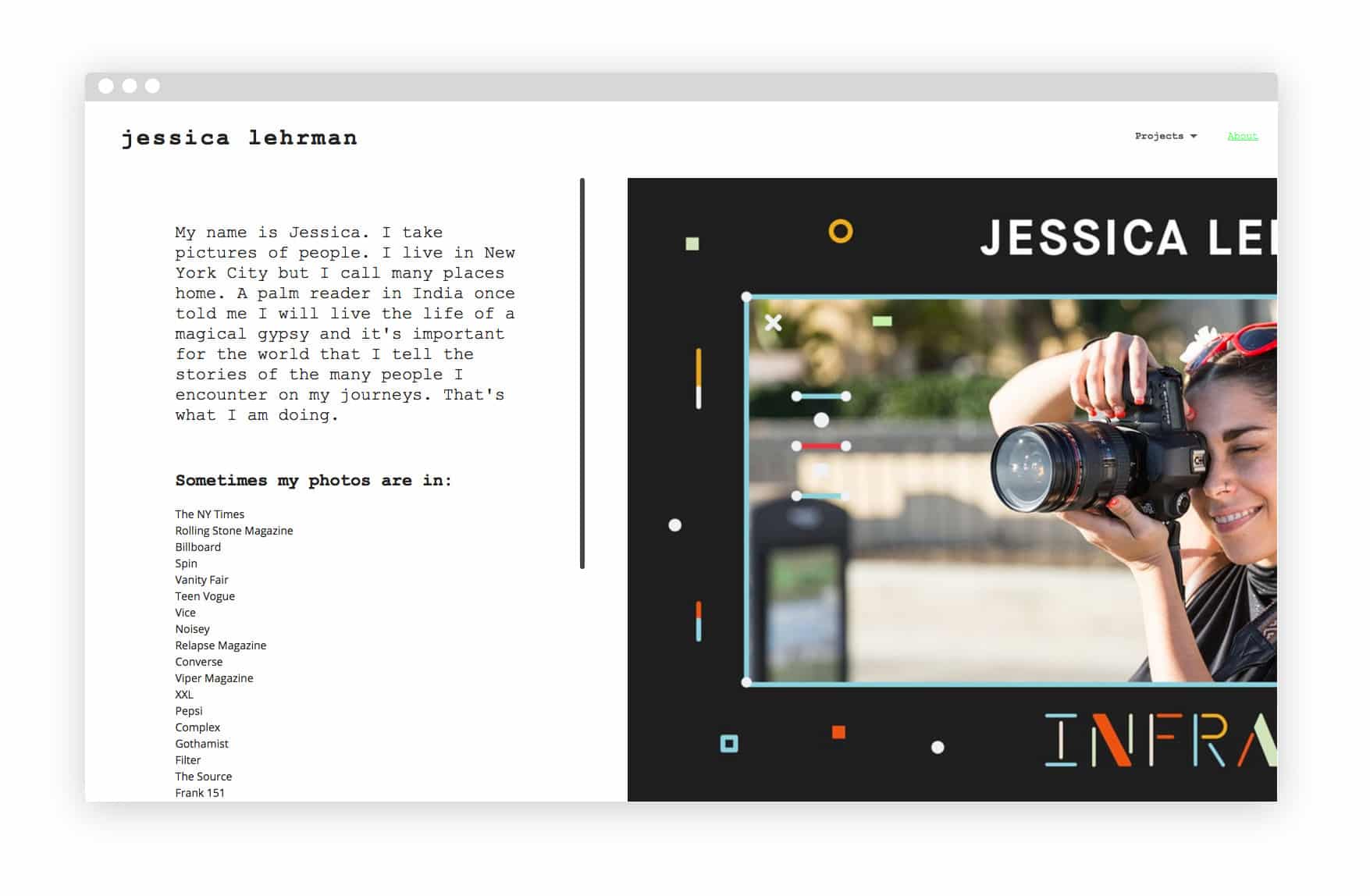
Jessica Lehrman’s portfolio
1. Introduce yourself
Tell readers who you are in the first line of your portfolio introduction. Before introducing yourself, first think about how you would do so. Mention where you are based.
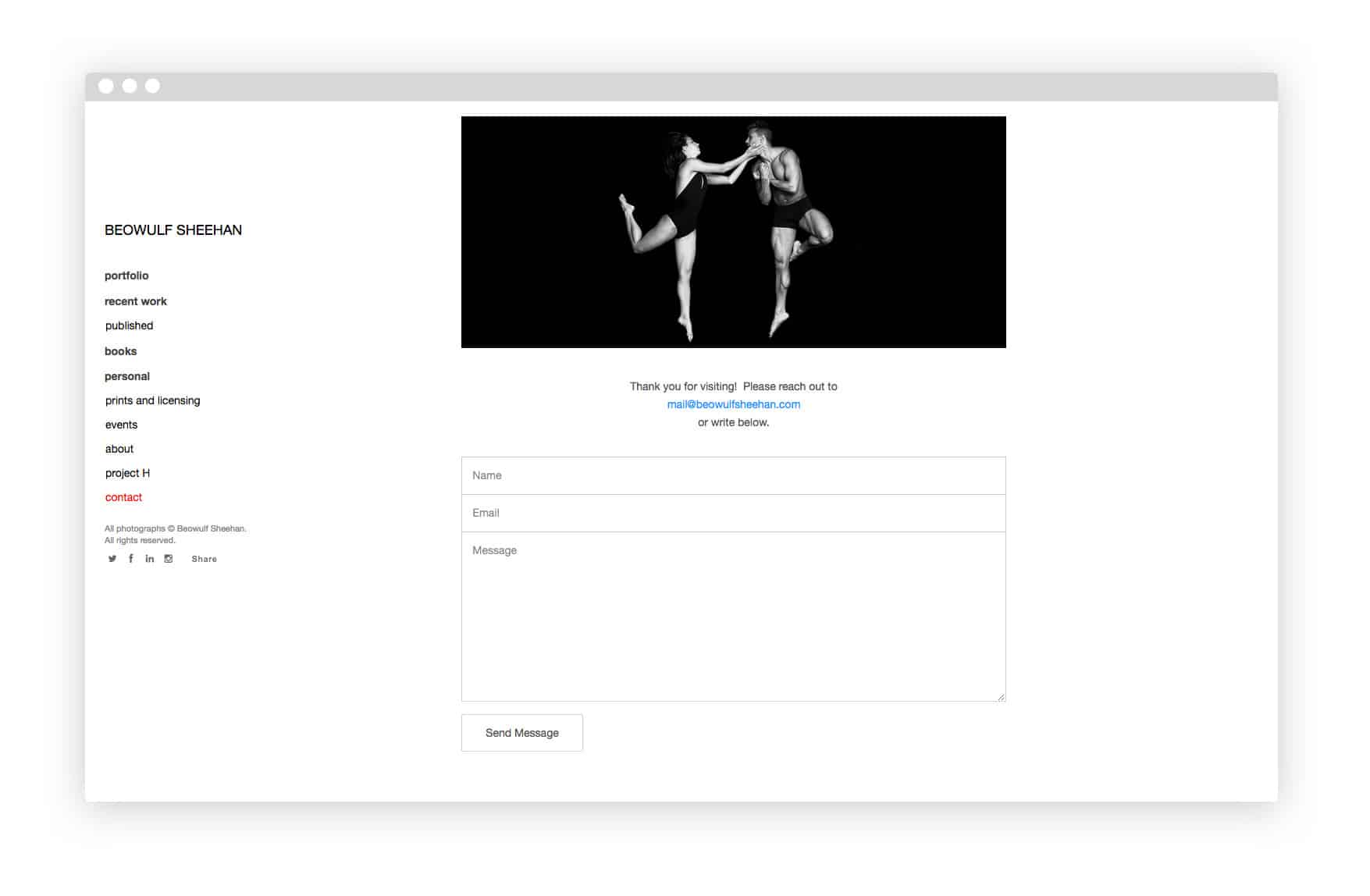
Lenka Selinger’s portfolio
2. Aim for a friendly, casual tone
There’s no need to be overly formal on your online portfolio website page. Keep the page name simple. This is your own space for representing yourself on the web. Let yourself feel at home, and write your About page the same way you would normally speak.
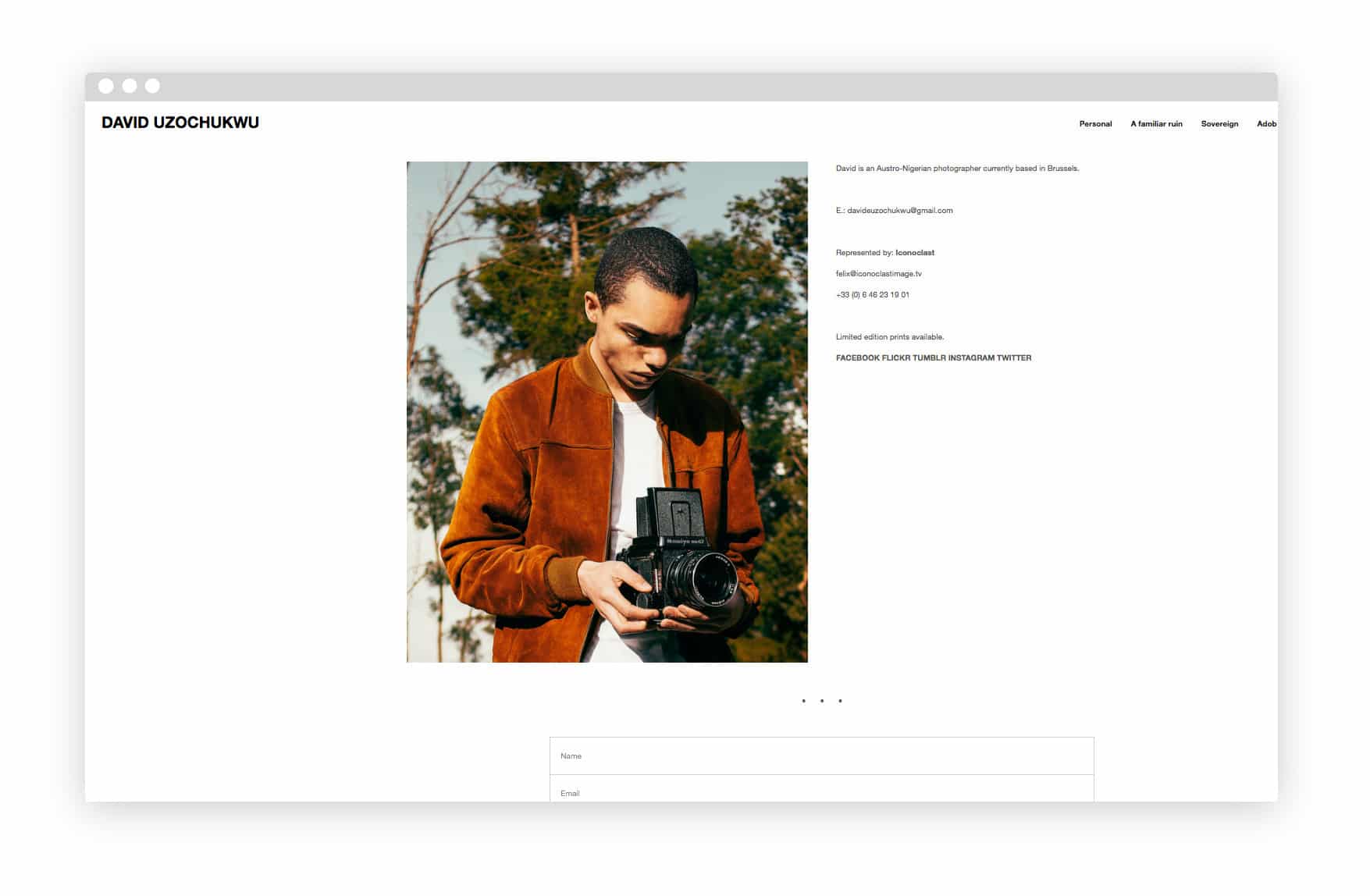
David Uzochukwu’s portfolio
3. Decide which professional experience to include
You can briefly present your work and keep the details for specific job applications, or make a separate page for your CV. Decide what you like. Include your education background and any projects you’ve worked on.
If you’d like your “About Me” page to include a CV, keep it short and simple. Your biography should be descriptive, but not too long. Add job headings, dates, and a quick description of your work and skills. Consider adding commissions or commercial work from recent clients or projects that highlight the skills and experience needed for a job you’re coveting.
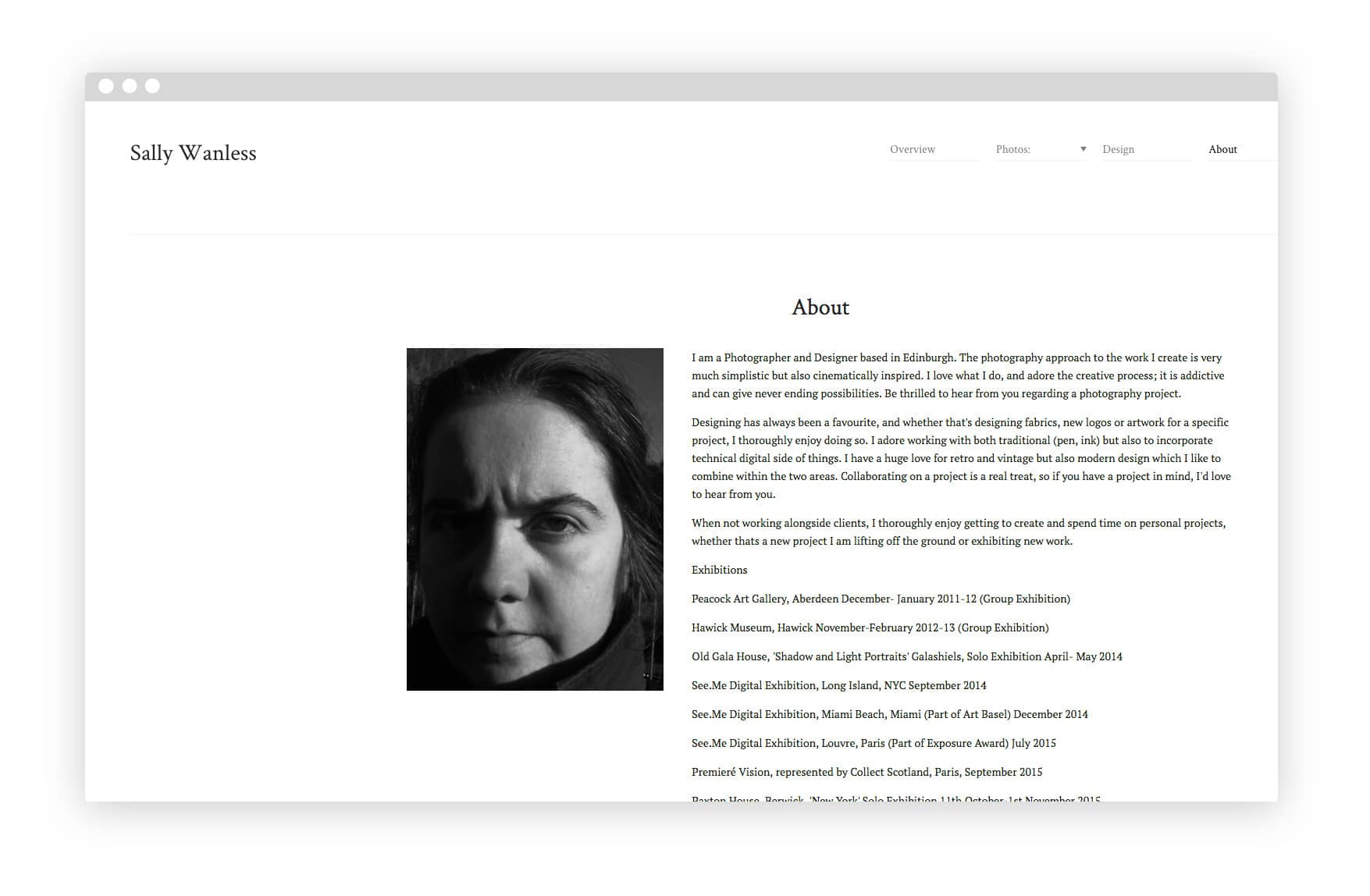
Sally Wanless’ portfolio
4. Consider listing awards and accolades
If you’ve been recognized for your work, your “About Me” page is a great place to briefly mention this. Depending on the kind of work you do, client testimonials might be appropriate to include here as well. You can consider obtaining a peer review from people within the industry or projects you’ve worked on.
But don’t get carried away listing all of your accolades. You can leave behind high school photography awards. Recognition for work by a reputable organization, team, or person in the past is certainly noteworthy.
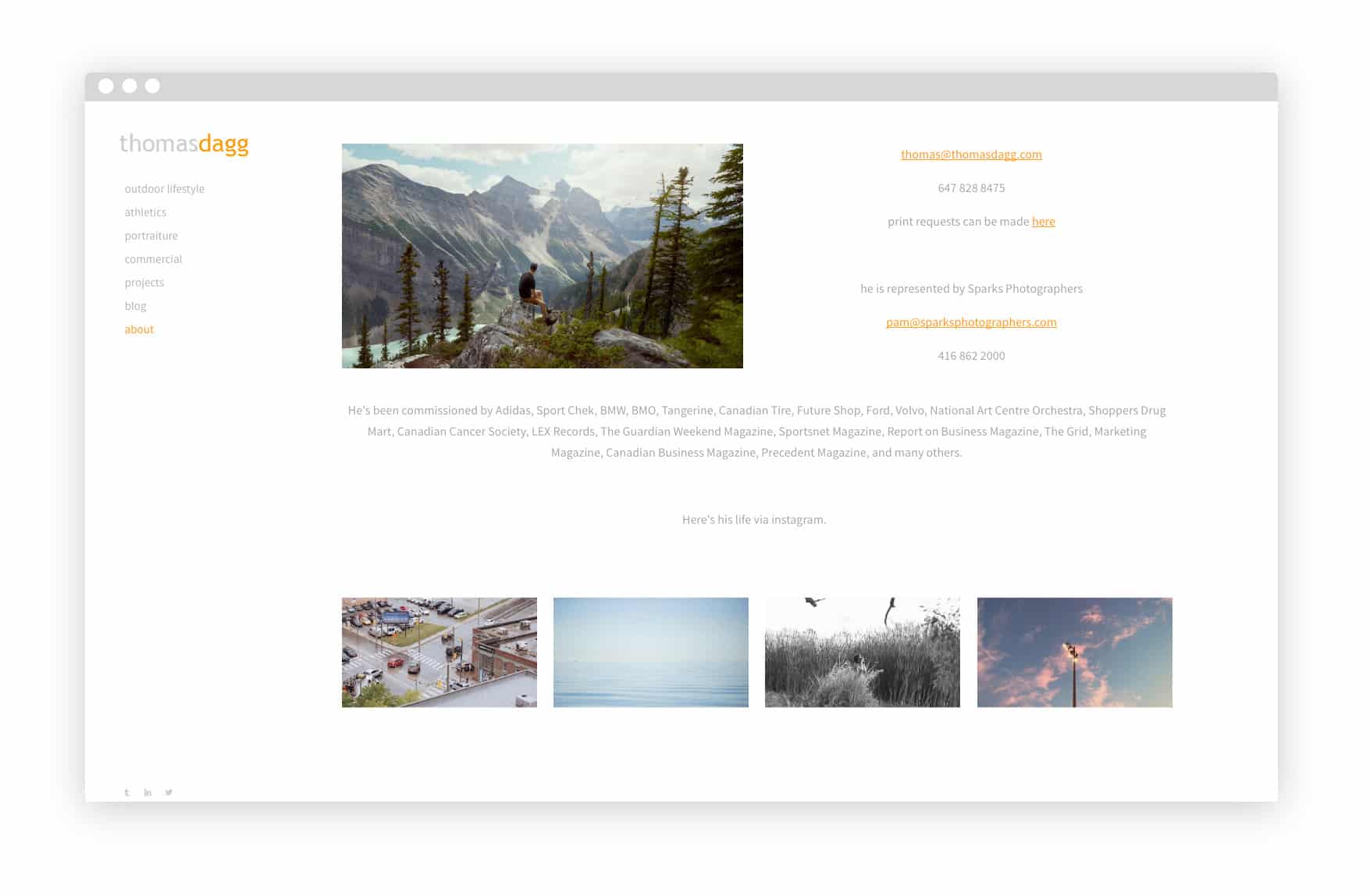
Thomas Dagg’s portfolio
5. Add a few personal details
It may seem unprofessional to include details of your personal life, but a biography page that only lists work-related information about you isn’t offering a complete introduction. It’s easy to skim through someone’s professional experience and not feel as if you’ve learned anything personal about them. Briefly mentioning something interesting about who you are or what you like, or other talent and skills to make your “About Me” page more memorable.
Remember: you want to come across as professional and reliable, but you’re also trying to stand out in a sea of many other professionals. Including these brief little details can make a world of a difference.
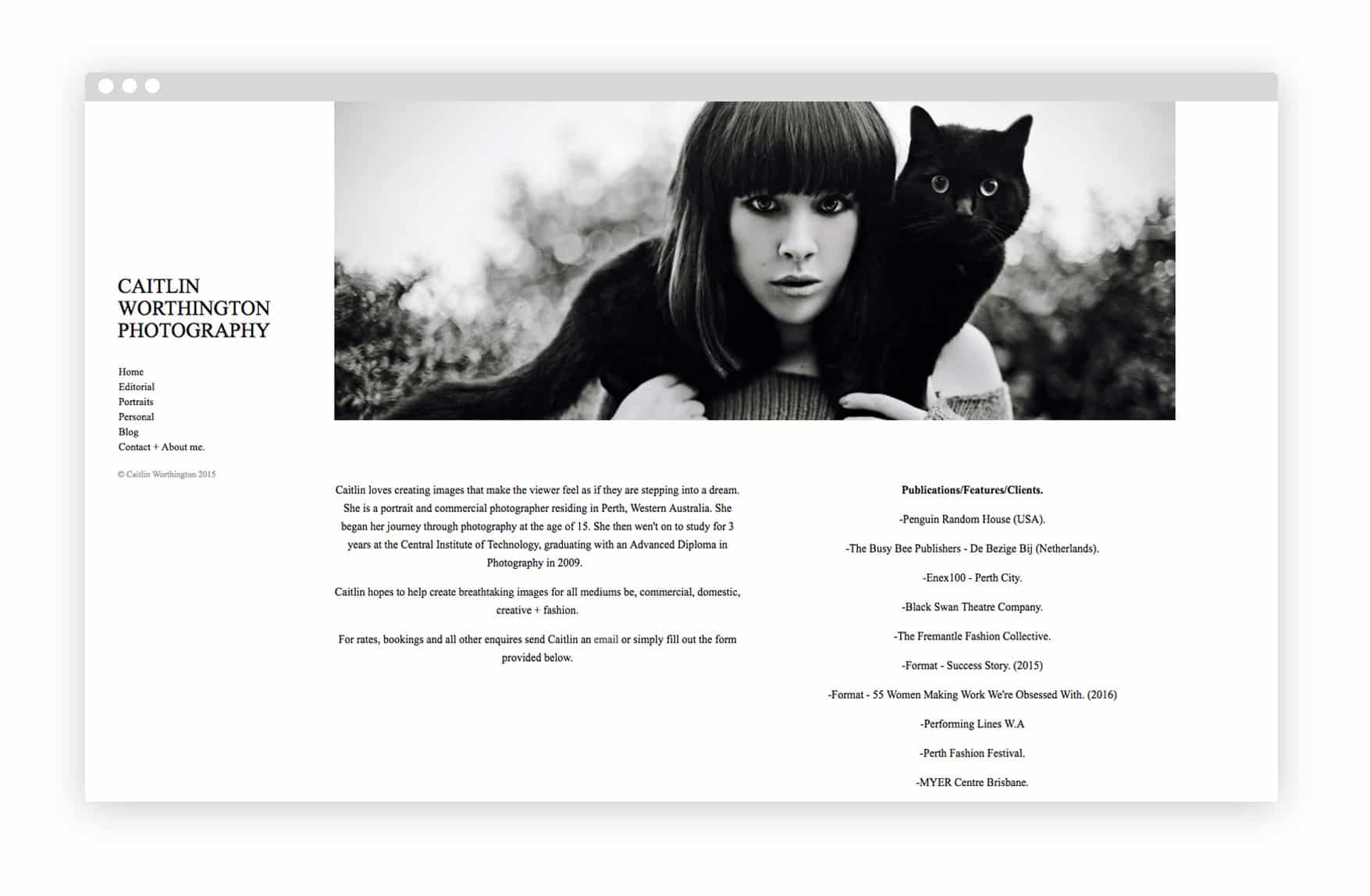
Caitlin Worthington’s portfolio
6. Include a photo of yourself
Choose a photo that represents your personality. Depending on the tone of your online portfolio website and what kind of work you do, you might choose an image that’s more professional (like a headshot) or something more personal (like a shot of you working in your studio). Adding a photo will make your online portfolio stand out by allowing visitors to put a face to your name.
Also, balance between personal and professional needs to be maintained. However, having a more intimate picture of you working in your studio is not a problem as long as it is not a picture of you taken in a bar on a Saturday night.
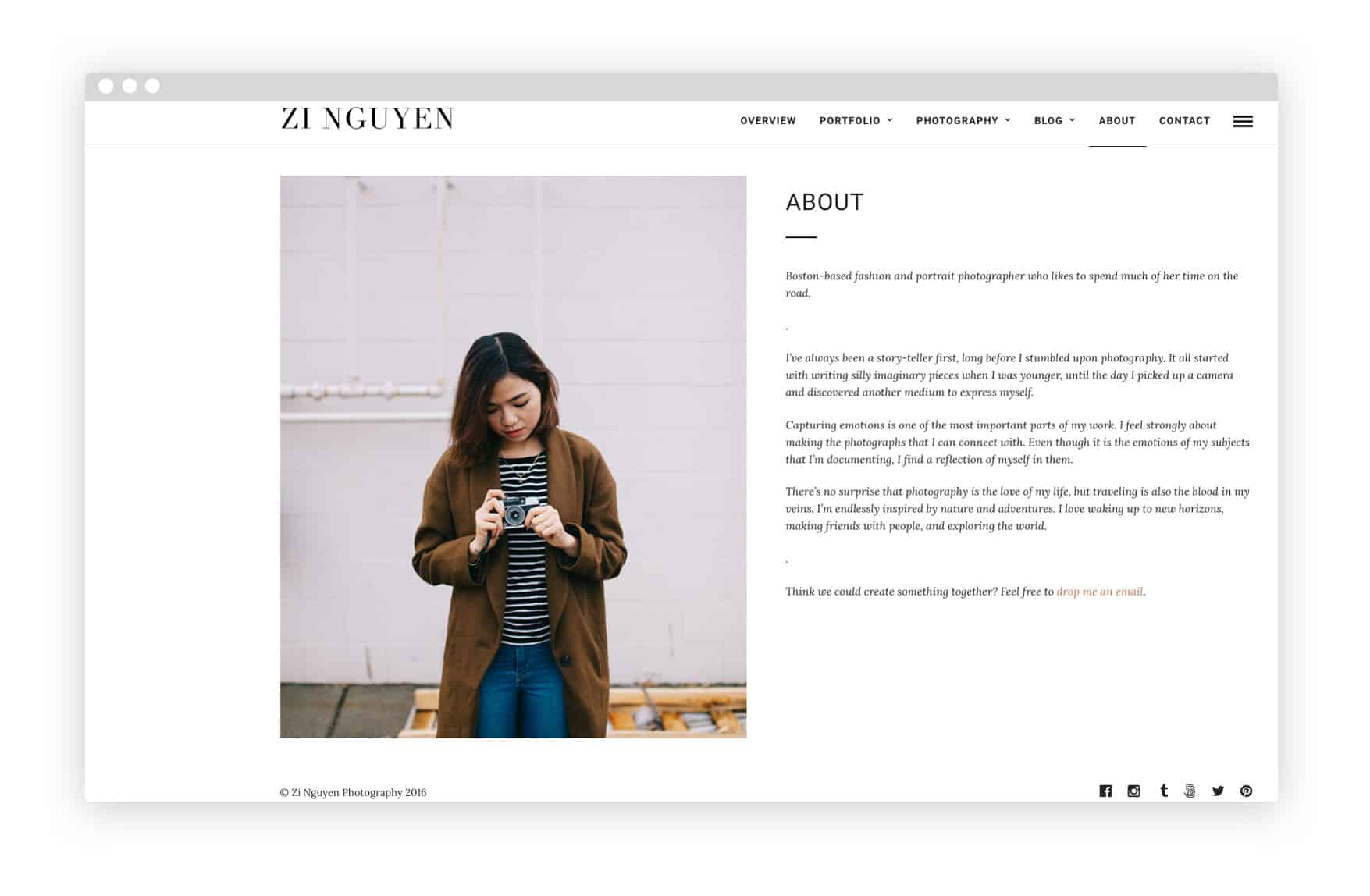
Matt Jacques’s portfolio
7. Proofread and edit
Your About page should not appear sloppy or unprofessional because of typos, spelling mistakes, and grammatical errors. Read everything carefully before saving your “About Me” page. Always make sure you look at both text-formatted sections in your portfolio. This ensures the content looks great.
Now, you’re ready to craft your about me page for your portfolios. Of course, it may take a bit of time at first and several drafts, but you can tweak them along the way and as you have more experience to add.
How To Write a Bio: Summed Up
Do you feel more confident about the idea of writing a biography page now?
To sum it up, writing your about me page is all about striking a balance between personal and professional; conscience and detailed. You don’t want to share every detail about your personal life on your about page—not relevant—but you also likely won’t keep anyone’s attention if you simply list out every job you’ve ever taken on—boring.
It may take some time and multiple drafts to get it right, but remember that you can always update and refine the page as you gain more experience!
Let’s get writing, shall we?








